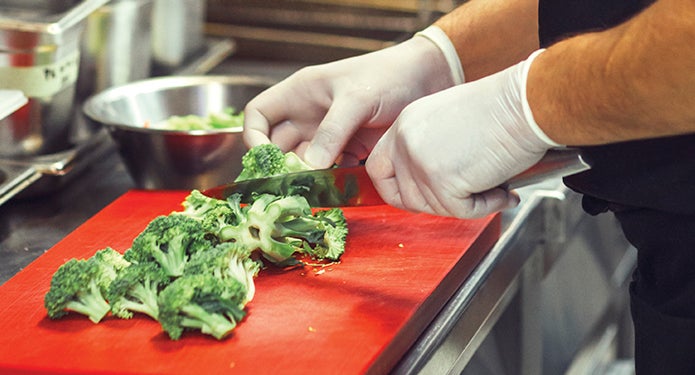When it comes to carryout and delivery orders, protecting your business and your customers is about being compliant and keeping food safety top-of-mind.
There’s growing customer demand for portability. As you consider embracing portability, it’s important to keep food safety top-of-mind and remind your customers to do the same. To help you do that, here’s what you should remember and what you should share with your guests.
Please note that all of these recommendations are based on the Canadian Food Inspection Agency (CFIA) recommendations.
Safety smarts
About 1 in 8 Canadians, or 4 million total, are affected by a food-borne illness on an annual basis and almost 12,000 people are hospitalized each year. Following and sharing general food safety guidelines with your guests reiterates that you have their best interest at heart and don’t want them to become a part of those statistics. But you should also consult with your provincial agency or health department on food safety requirements specific to your area.
Food safety starts with you
Following these food safety best practices can go a long way toward protecting you and your customers.
Maintain time and temperature control
Some foods require time and temperature control in order to safely avoid bacterial overgrowth and the spread of food-borne illness. These include items such as eggs, meat, poultry, seafood, dairy products, cut tomatoes and melons, rice and beans. They are called potentially hazardous food. All potentially hazardous foods need to be kept out of the temperature danger zone, which is 4°C-60°C. Always check the temperature of potentially hazardous food after cooking to ensure it is safe for eating. Shelf-stable foods, like cereal bars and muffins, do not require time or temperature control.
Prevent cross-contamination
Cross-contamination occurs when bacteria or other microorganisms are unintentionally transferred from one substance or object to another. To prevent this, use separate cutting boards and kitchen utensils so that ready-to-eat items such as lettuce aren’t contaminated with raw meat, poultry or fish. When thinking about offering this food to-go or for carry out, consider using pre-portioned or wrapped items so you can quickly package or your guests can quickly grab without the fear of contamination.
Hand-washing is key
Hand-washing is one of the most effective ways to prevent the spread of infection and food-borne illnesses. Hand sanitizer is not a suitable replacement for washing hands with soap and water. Whether packaging up a meal for carryout or stocking a grab-and-go station, all of your employees should wash their hands before and after their tasks.
Proper Hand-washing Steps
- Wet your hands with running water as hot as you can comfortably stand it (at least 38°C).
- Apply soap.
- Vigorously scrub hands and arms for at least 20 seconds. Clean under fingernails and between fingers.
- Rinse thoroughly under running water.
- Dry hands and arms with a single-use paper towel or warm-air hand dryer.
It ends with your guests
Help your guests safely enjoy their meal at home or on the go by including proper handling, holding, refrigerating and reheating instructions with all of your items.
Handling and holding
Instruct customers not to leave perishable food out for more than two hours. Also tell them to keep cold items at or below 4°C (41°F) and hot items above 60°C so that they stay out of the temperature danger zone. Toss anything that sits out longer than that or gets too hot or cold.
Refrigerating
Cool hot food to 20°C or below within two hours and to 4°C or below within four hours. Cold foods should also be kept at or below 4°C.
Reheating
Leftovers should be reheated to a minimum internal temperature of 74°C. Also, include “best if used by” dates, which can be three or four days from when the items were made, assuming that they were properly refrigerated.
Food Safety Resource
For questions regarding food safety for a portability program, contact the Nutrition Resource Centre by emailing nutritionrc@gfs.com or calling 1-866-814-1272.










